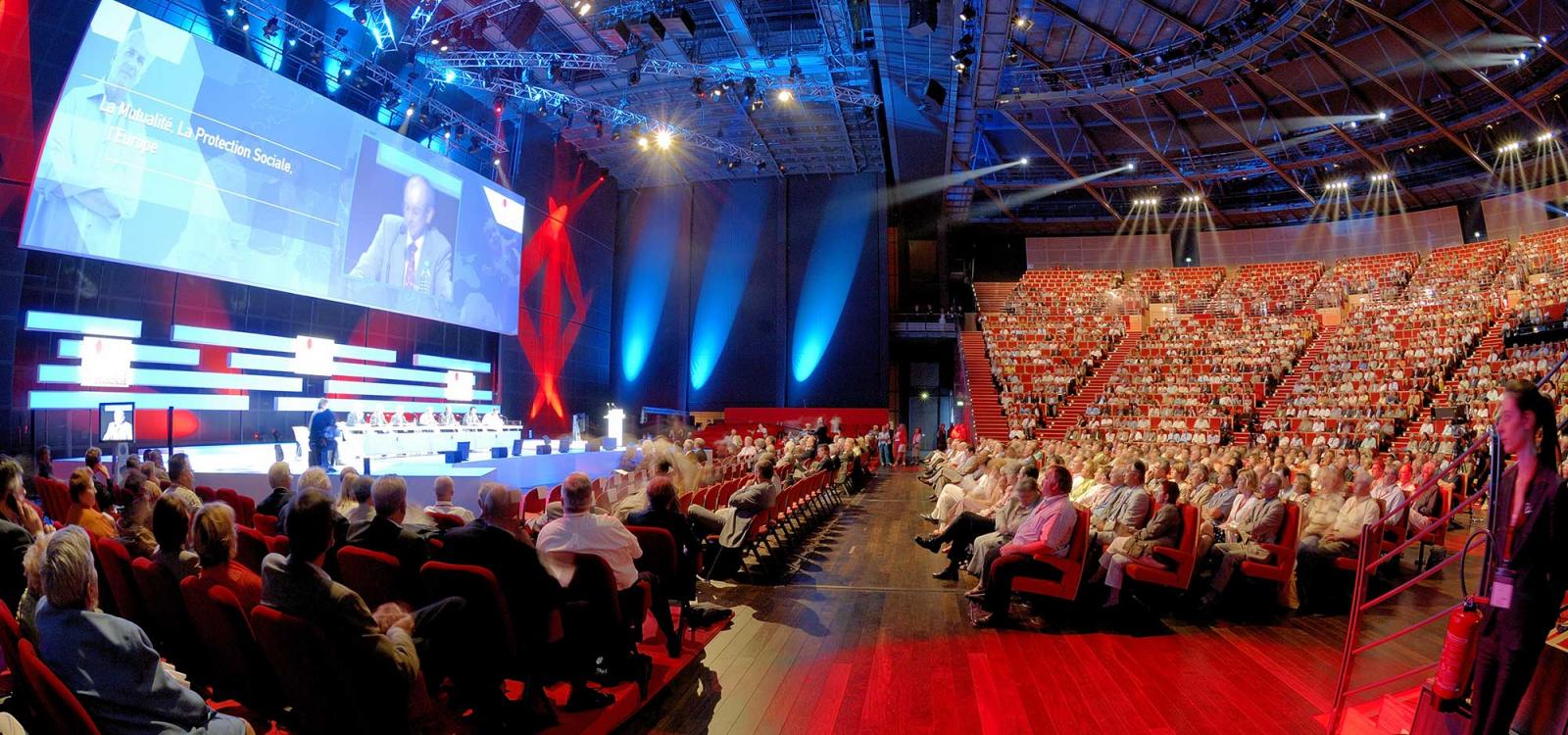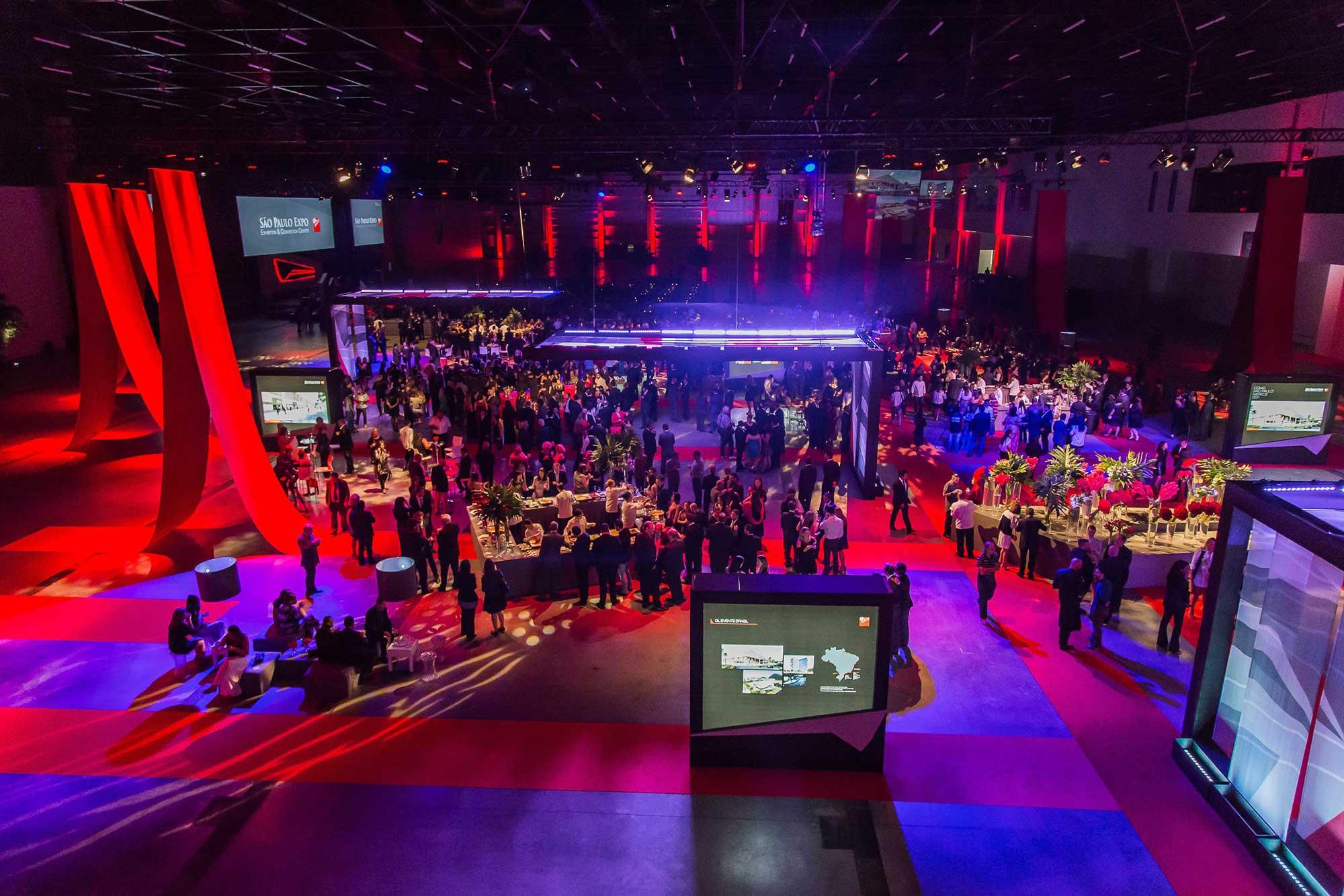Many meetings, galas, and conferences aim to provide networking opportunities, but it is important to not interpret this literally. Attendees prefer events that are not overcrowded and hard to move around in, so accurately determining the capacity of the event is crucial in the planning process. In addition to ensuring attendee satisfaction, calculating the right capacity is also important for event safety and ensuring compliance with local ordinances and fire codes.
Simultaneously, hosting an event in a venue that is much larger than needed for the number of guests will make the event appear small and poorly attended. To calculate event capacity estimates, follow these easy steps, including determining the square footage needed per person for a meeting and the number of guests a venue like Space 289 can accommodate. It is important to use efficient methods to find suitable venues and accurately determine their capacity. Speed and accuracy are crucial in this process.
Next, adhere to our specific guidelines to accurately compute the number of seats and the amount of usable space in different event spaces for meetings, intimate gatherings, or grand receptions. When searching for entertainment venues near me, considering the type of event and expected turnout is essential to ensuring the space matches the event’s scale and style.

Uncover the crucial steps to accurately determine the capacity of an event.
Connect attendance numbers to the event’s various activities
Event space calculators on the internet can be useful tools to get an idea of how much space you’ll need for your event. By entering the number of guests you anticipate or the size of the space available, you can receive an estimate of the square footage required or the maximum number of attendees that can be accommodated.
However, the true determination of your event’s capacity relies on understanding how the space will be utilized. Will attendees be socializing in one area before moving to different meeting rooms? Is the event stand-up, like an art gallery opening or cocktail hour, or will guests be seated for the duration of the event, such as in rows for a presentation or at banquet tables for a meal? Each scenario requires a different amount of space per person.
In every situation, it is important to consider not only the total size of the location, but also the amount of space that can actually be used. For instance, do not factor in the space behind the bar or any other areas that are not suitable for your specific event. A room with an unusual shape and multiple corners may be suitable for a networking event, but may not be practical for other types of events due to the layout of banquet tables or obstructed sight lines.
Here are some frequently asked questions (with answers!) regarding event capacity:
What is the square footage per individual when standing?
A general guideline to follow when accommodating a standing crowd is to allocate six square feet per person. For instance, if you are organizing a cocktail hour for 100 guests who will all be standing, you should calculate that you will need a venue with at least 600 square feet of usable space for the event.
Increase the per-person rule of thumb to eight square feet for events with a mix of seated and standing guests, like reception-style seating. So, for a 100-person event, you will now need 800 square feet of usable space.
For a seating arrangement that includes a dance floor, plan on allocating approximately nine square feet per person at the reception.
It is important to take into consideration that in this event, rooms or venues with unique shapes should be able to be fully utilized. The tables, if there are any, will be small, allowing people to easily reposition themselves for a better view of the front. A venue with an unconventional layout could actually be beneficial, as it will provide natural opportunities for diverse seating arrangements and conversational spaces.
Attendees do not like overcrowded events that are hard to navigate, so it is important to accurately estimate event capacity.
What is the appropriate room size per person for a meeting?
The capacity of a meeting room depends on how the seats are arranged, with factors like aisles and clearance between chairs and walls also taken into account when estimating the size of the room.
- Conference table: Allow 30 to 40 square feet per person, accommodating groups of up to approximately 30 individuals.
- A hollow square layout typically requires 35 to 40 square feet per person and is commonly used for groups ranging from 17 to 40 individuals.
- Each person in the classroom will have approximately 14 to 18 square feet of space at their desk.
- Auditorium-style seating requires 6 to 8 square feet per individual.
What is the seating capacity of a venue per square foot?
In this case as well, the outcome will differ based on how the seats are organized.
- Each person at dinner will have approximately 9 to 10 square feet of space at rectangular tables.
- Each person at a round table for dinner should have approximately 11 to 12 square feet of space.
- For each person, there should be 6 to 8 square feet of seating in a theater or auditorium style arrangement.
Make sure to consider the available space efficiently. For instance, when using banquet rounds, ensure that all areas in the room can accommodate a round table with chairs comfortably.

Utilize tools for finding and selecting venues
After that, it is time to use sourcing tools like Cvent’s Supplier Network venue explorer. Search for event spaces that are around the size you need, and also consider venues that are slightly larger. If you require specific square footage for items like a dance floor, stage, bar, head table, refreshment credenza, or any other items that require floor space, make sure to include those measurements in your initial estimate.
Why choose venues that are larger than necessary? The maximum capacity of the space must meet fire code regulations, which can vary depending on factors like the type of venue, exit routes, and potential obstructions. It is not possible to determine this capacity with a simple formula.
Each venue will have a posted sign indicating the maximum capacity, and it is important to adhere to this limit. It is essential to consider both safety regulations and guest comfort when selecting an event space. Remember, the fire marshall prioritizes safety over the attendee experience.
If your group consists of 250 people, do not limit your search to venues that can accommodate exactly 250 people. Also consider venues that can hold more than 250. Similarly, if you think you need 600 square feet, do not disregard venues with 900 square feet, as this will provide your guests with more space to move around.
When considering venues that can accommodate more people, it is important to assess whether your event would be a good fit for each one. Trust your instincts and physically visit the sites, paying attention to the layout and features of the venue. Oddly-shaped rooms, blocked views, and immovable objects can limit the number of guests that can comfortably fit in the space. Additionally, providing more space between chairs can reduce the maximum capacity listed for the venue.
Occasionally, venues may offer images or 3D representations of their space arranged for a certain number of people. This can be a useful feature to consider when using venue sourcing websites.
Take a stroll around the event location with a measuring wheel
Relying only on the numbers provided in venue listings or room dimensions given by the venue manager is not enough. When visiting a space in person, you can pick up on things based on your own experience that may not be apparent in a virtual representation.
This is why it is important for you, or a reliable team member, to always physically visit the venues. As an event planner, you may be familiar with local spaces, but when organizing an event in a different city, it is recommended to personally inspect the venue.
Verify the venue’s listed square footage and review the room layout at the location. If the room is not a standard shape or has blocked views, your task of arranging the space may be more difficult.
In the event that a diagram of the area is not provided by the venue or lacks necessary information, create one yourself. Use a measuring wheel to determine the length and width of the room. If the area is a rectangle, calculate the square footage by multiplying the length and width.
If the room has an unconventional shape, break it down into smaller rectangles with calculable areas. Add up these areas to find the total area of the room. If there are any unusable areas, like behind a bar, calculate the total area of the room and the bar separately, then subtract the bar’s area to find the usable space.
To demonstrate how this functions in practice, let’s calculate the capacity for two different types of events.
Determining the maximum number of guests that can attend a wedding reception.
Imagine you are organizing a wedding reception for 100 guests, with a seated dinner at circular tables. The beautiful open area you are considering is 1,750 square feet. Do you think the event will be able to accommodate everyone?
The calculation in Step 1 indicates that you will need approximately 1,100 to 1,200 square feet for the banquet rounds, which means you are on track.
You will also require space for a dance floor, a DJ booth, a bar, and a main table.
- The suggested amount of space per person on the dance floor is 4.5 square feet. Typically, about 33% to 50% of guests will actually use the dance floor at an event. It is important to consider the dancing preferences of your attendees before planning the size of the dance floor. For a reception with 100 people, this means there should be between 33 and 50 guests on the dance floor, requiring between 150 and 225 square feet of space.
- The DJ booth typically measures approximately 200 square feet in size.
- A bar should be positioned carefully in order to maximize space usage and avoid wasting space behind it. It should take up roughly 100 square feet.
- Head table: Approximately 100 square feet designed to accommodate eight guests.
The additional space amounts to approximately 600 extra square feet.
It will be a tight fit: This occasion requires between 1,700 and 1,800 square feet, and the location is 1,750 square feet. Your design must be carefully planned. Use a free event planning tool to simplify your task and ensure your layout is precise, and consider looking for an alternative venue with some extra space as a backup plan.
Estimating how many people can attend a corporate presentation
Imagine a meeting space that measures 50 feet by 50 feet, totaling 2,500 square feet, which is being utilized for a corporate meeting featuring a slide and video presentation. Naturally, not every inch of the room will be filled with chairs; there must be room left at the front, back, and sides, as well as space for aisles.
To begin, reduce the clearance by 4 feet on the back and each side. The amount of space needed at the front is determined by the height of the screen: aim for approximately double the height of the screen for optimal viewing. Given that the screen is 8 feet high in this room, you should have 16 feet of space at the front.
By subtracting 20 feet in total (16 feet from the front and 4 feet from the back) and 8 feet in total from the width (4 feet from each side), the resulting usable space measures 30 feet in length and 42 feet in width.
Next, determine how many rows can be accommodated in the room. Many chairs are 20 inches deep, and it is common to space them one chair-length apart. This results in each row being 40 inches long. However, this may not provide enough space for attendees to move past each other comfortably. To prevent attendees from having to climb over others or potentially leave, consider increasing the row length by a few inches. It is suggested to estimate 43 inches per row.
A 30-foot long space measures 360 inches. When divided by 43 inches per row, it calculates to approximately 8.37 rows. Since you can’t have a fraction of a row, round down to a total of eight rows.
In many places, this is close to the maximum number of rows allowed before an aisle is required, so be sure to review your city’s fire regulations.
Next, determine the number of seats in each row. In this scenario, the chairs are 18 inches wide and can be placed directly next to each other. However, to allow for more comfort, it is recommended to have 22 inches of space between the center of each seat. The total width of the room is 504 inches, so dividing this by 22 inches per seat gives a total of 22.9 seats. Round this number up to 23 seats for practical purposes.
This configuration has an ideal number of seats for one aisle down the center: 10 seats on each side, with a 66-inch aisle (3 seats removed, each 22 inches wide) running through the middle, totaling 20 seats per row.
20 seats per row x 8 rows = 160 seats.
Subtract any seats with blocked views or positioned at less than a 30 degree angle to the center of the screen. Once those are removed, the calculated event capacity for this presentation is a comfortable 160. Seats in the middle rows are more likely to be used, as they offer easier access without having to squeeze past others in a cramped space.
Many event planners rely on event layout software to quickly set up rooms and handle various calculations. However, there is a growing interest in choosing unconventional event venues and understanding how to determine the optimal event capacity for different types of events. Being able to calculate event capacity in advance can give you a head start in the planning process and an advantage over others in the industry.
You now possess all the necessary tools and strategies to accurately determine the capacity of the venue for your upcoming event!
Utilize our complimentary event diagram software to easily determine event capacity and plan your events more efficiently than before! Additionally, enhance your event planning skills with these essential 6 skills for event organizers.

Final Thoughts
Mastering the art of capacity calculation is essential for the success of any event. From ensuring guest comfort to meeting safety regulations, the ability to precisely determine the right amount of space is crucial. Whether you’re planning a small meeting or a large gala, using efficient and accurate methods to assess venue capacity is key. For those seeking additional resources and tools to aid in these calculations, visiting calculatorprofessional.com can provide valuable insights and solutions. Remember, an accurately planned event not only meets expectations but also enhances the overall experience for all attendees.